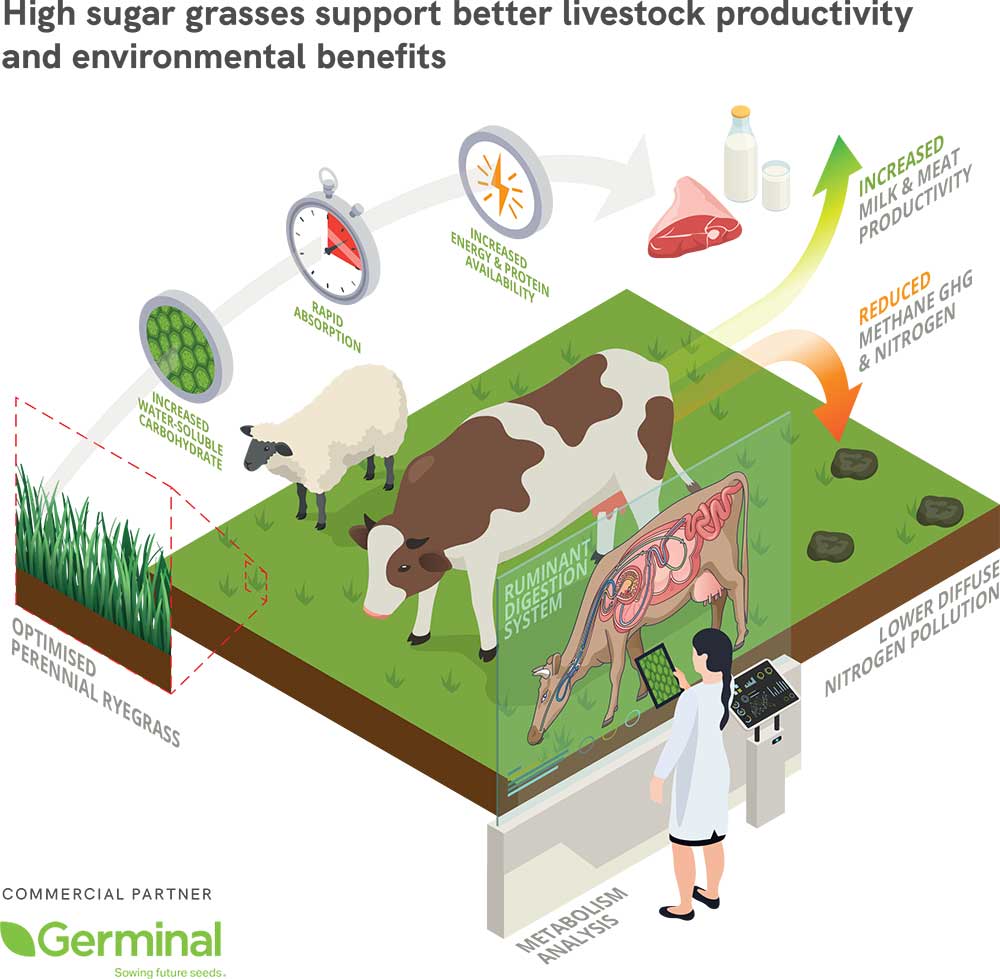High Sugar Grasses Impact Case Story
High Sugar Grasses

High Sugar Grasses: Boosting Productivity, Cutting Emissions
High sugar ryegrasses bred at IBERS have become a global success story—improving livestock productivity while reducing the environmental impact of grassland farming.
The development of these improved perennial ryegrasses began in the 1980s, based on detailed research into plant carbohydrate biochemistry and how forages are broken down in the first stomach (the rumen) of sheep and cattle. Researchers discovered that when livestock lack readily available energy sources—particularly water-soluble carbohydrates (commonly referred to as “sugars”)—animal productivity declines and nitrogen excretion increases. This nitrogen, released in urine and faeces, contributes to water pollution, greenhouse gas emissions, and overall environmental impact.
By identifying natural genetic variation in sugar accumulation within ryegrass populations, IBERS scientists were able to breed new varieties with consistently higher concentrations of soluble carbohydrates.
The result: a new generation of high-sugar grass cultivars, including AberDart and AberMagic, which deliver measurable benefits for both farmers and the environment:
- Higher livestock productivity – supporting increased liveweight gain and milk production
- Improved feed efficiency – better conversion of grass into meat and milk
- Lower nitrogen losses and emissions – reducing pollution from livestock systems
- Reduced environmental footprint – helping make grassland farming more sustainable
These grasses are marketed by IBERS’ long-term commercial partners, Germinal, and are now widely grown across the UK and increasingly overseas—demonstrating how research-led innovation in plant breeding can contribute to a more sustainable future for agriculture.
Downloads
Download our full IBERS Impact Case Stories Booklet here: Innovations for a Changing World Case Story Booklet
